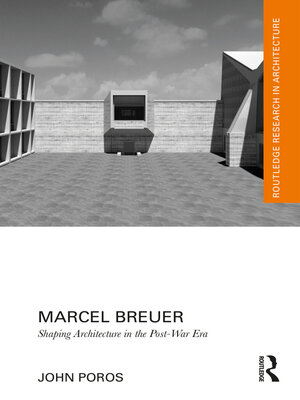Marcel Breuer
ebook ∣ Shaping Architecture in the Post-War Era · Routledge Research in Architecture
By John Poros

Sign up to save your library
With an OverDrive account, you can save your favorite libraries for at-a-glance information about availability. Find out more about OverDrive accounts.
Find this title in Libby, the library reading app by OverDrive.



Search for a digital library with this title
Title found at these libraries:
| Library Name | Distance |
|---|---|
| Loading... |
This book tracks the development of Marcel Breuer's aesthetic clash between uniformity and singularity through the detailed examination of his seminal buildings. Each chapter examines a specific building and puts into context Breuer's other work and the contemporary movements/architects of the post-war era such as Surrealism, Brutalism and structural expressionism. The buildings examined include the UNESCO Headquarters in Paris, France, of 1958; the IBM Research Center in Le Gaude, France, of 1962; the Annunciation Priory in Bismark, North Dakota, of 1963; and the Atlanta Central Library of 1980.
Marcel Breuer's approach to design was inspired by the Spanish phrase, sol y sombra (sun and shadow). Sun and shadow meant for Breuer that a juxtaposition of contrasts was necessary; light glass walls and heavy concrete, masses lifted over voids, and serial precast construction resting on sculptural columns became hallmarks of Breuer's buildings. By creating an architecture of juxtaposition, Breuer's work can be interpreted as a surrealist recontre, as fueling a new architectural condition.
A critical evaluation of Marcel Breuer's work, this book is written for graduate students, researchers, and academics interested in his work and how it shaped the architecture of the post-war era.







